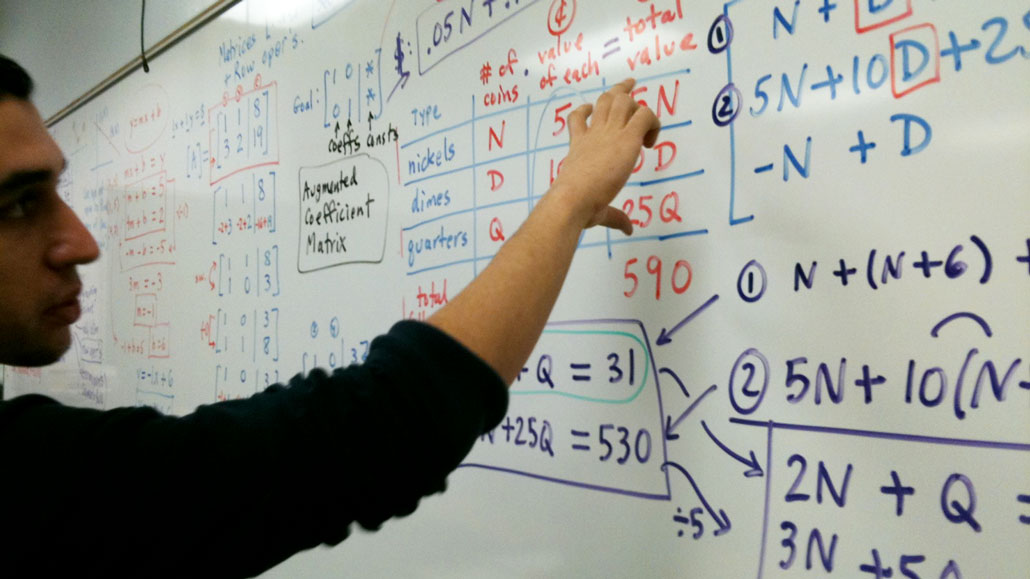algebra: A field of mathematics that describes a way to think about certain relationships that will involve numbers. And not just any particular number, usually, but abstract expressions involving numbers. For instance, instead of saying “1 + 2 = 3” or “3 – 1 = 2,” algebra gives each number a letter to take its place. So it now reads something like a “a + b = c” or “c - a = b.” But any number can substitute for those letters as long as the values on each side of the equal sign are still true. In other words, the a can be a 100 and b can be 101 as long as c = 201. Such expressions with different things on either side of an equals sign are known as algebraic equations.
equation: In mathematics, the statement that two quantities are equal. In geometry, equations are often used to determine the shape of a curve or surface.
field: An area of study, as in: Her field of research was biology. Also a term to describe a real-world environment in which some research is conducted, such as at sea, in a forest, on a mountaintop or on a city street. It is the opposite of an artificial setting, such as a research laboratory. (in physics) A region in space where certain physical effects operate, such as magnetism (created by a magnetic field), gravity (by a gravitational field), mass (by a Higgs field) or electricity (by an electrical field).
origami: The traditional Japanese art of paper folding. It starts with a flat sheet of paper. Through folding — and no cutting — the paper can be carefully folded into decorative 3-D structures, such as a bird in flight.
robot: A machine that can sense its environment, process information and respond with specific actions. Some robots can act without any human input, while others are guided by a human.

